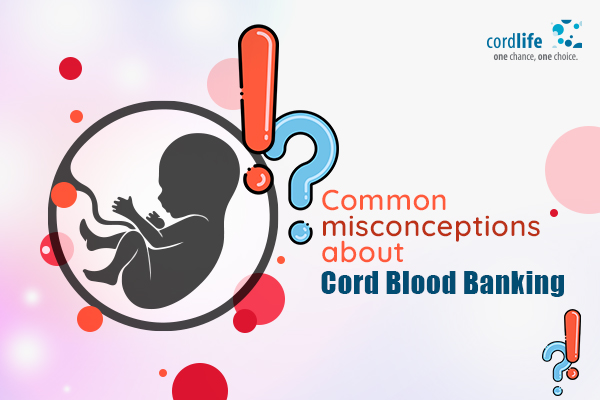Table of Contents
- Misconception: Stem Cell Therapy is Still in the Experimental Phase
- Misconception: Cord blood Is Not a Preferred Source of Stem Cells For Transplants
- Misconception: Cord Blood Donors Are Easily Available and There Is No Need for Cord Blood Banking
- Misconception: Collecting Cord Blood Can Intervene During the Process of Delivery of a Baby
- Misconceptions: All Cord Blood Banks Are the Same
Cord blood banking can be a life-saving decision for your child and the family. When making this decision you need to be sure about all the pros and cons. Unfortunately, there are lots of misconceptions surrounding stem cell banking. Some of them are:
Misconception: Stem Cell Therapy is Still in the Experimental Phase
Fact: Stem cell therapy is no longer in the experimental phase. More than 30,000 umbilical cord blood stem cells transplants have been done worldwide. Umbilical cord blood is an accepted source of stem cells for a blood transplant patient. Umbilical cord blood is frequently being used to treat blood-related cancers such as leukemia, lymphoma and sickle cell diseases. It is also being used to treat inherited genetic disorders, bone marrow disorders and other immune-related diseases.
Misconception: Cord blood Is Not a Preferred Source of Stem Cells For Transplants
Fact: Umbilical cord blood is a rich source of stem cells. Newborn stem cell banking can help the family of the baby access cord blood more easily than extracting it from the bone marrow of a donor. The process to get stem cells from a donor is a lengthy process that involves consent, compatibility testing and harvesting. Valuable time gets lost in this. Cord blood can be availed of easily from newborn cord blood banking than looking out for a donor for bone marrow with compatibility.
Misconception: Cord Blood Donors Are Easily Available and There Is No Need for Cord Blood Banking
Fact: In India, it is difficult to find donors easily. There is a long queue of patients seeking donors. Finding a donor can also be an expensive affair. The cost of one unit of stem cell can be anywhere between Rs 15 lakh and Rs 20 lakh. Therefore, even if a match is found, many patients are not able to afford the treatment. Therefore, investing in newborn cord blood banking will help you access the stem cells whenever needed at a cheaper cost.
Misconception: Collecting Cord Blood Can Intervene During the Process of Delivery of a Baby
Fact: Cord blood collection does not intervene during the process of delivery of a baby. The umbilical cord blood is collected after the baby is born by clamping and cutting the umbilical cord. The process is safe for both normal and C-section delivery. Usually, the umbilical cord is discarded after the birth of the child but in newborn cord blood banking, the same is collected and preserved.
Misconceptions: All Cord Blood Banks Are the Same
Fact: All cord blood banks are not the same. There are two types of cord blood banks—public banks and private banks. Public banks allow parents to donate the umbilical cord blood of their baby, which is then mainly used for research purposes. At private banks, you have the option to save the umbilical cord blood of your newborn at a cost and access it whenever needed if at all. While choosing a private bank for baby stem cell storage, check the certification, technological expertise and safety standards followed by the bank.
Remember, a small investment in newborn cord blood banking today can save your child’s life tomorrow. Therefore, bust all myths and make an informed decision.
